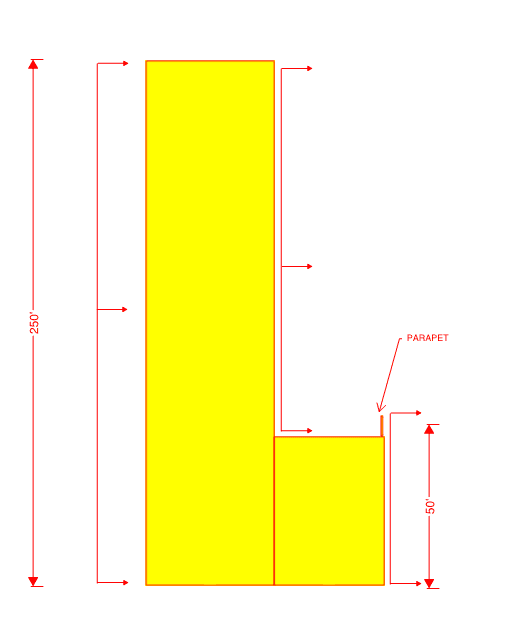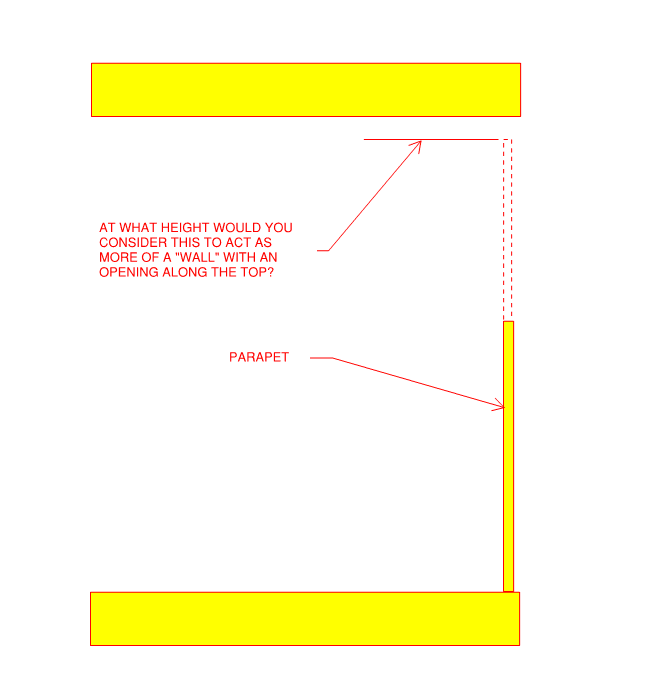What would one use for a parapet wind pressure on a low roof adjacent to a tall building? Calculating this load per ASCE7-10 would you take h as 250' or 50' (specifically for the parapet design in question)?
Would your answer change in any way if the low roof height was closer to the upper roof, say 230'?

Also, at what point would one consider a parapet to become more of a wall with openings along the top as opposed to a parapet assuming there is roof above, as in the below sketch? At some point, the wall would enclose the space such that you no longer have exterior pressures on the back side. I would think that there is a point where the space inside of the wall becomes partially enclosed, then fully enclosed as the top of the parapet gets closer to the roof above.
I guess the more specific question is at what point would it transition from a "partially enclosed" condition to a "parapet"? Is a 1' gap considered partially enclosed, but 2' or more you would treat it as a parapet?

Thanks in advance.
Would your answer change in any way if the low roof height was closer to the upper roof, say 230'?

Also, at what point would one consider a parapet to become more of a wall with openings along the top as opposed to a parapet assuming there is roof above, as in the below sketch? At some point, the wall would enclose the space such that you no longer have exterior pressures on the back side. I would think that there is a point where the space inside of the wall becomes partially enclosed, then fully enclosed as the top of the parapet gets closer to the roof above.
I guess the more specific question is at what point would it transition from a "partially enclosed" condition to a "parapet"? Is a 1' gap considered partially enclosed, but 2' or more you would treat it as a parapet?

Thanks in advance.
